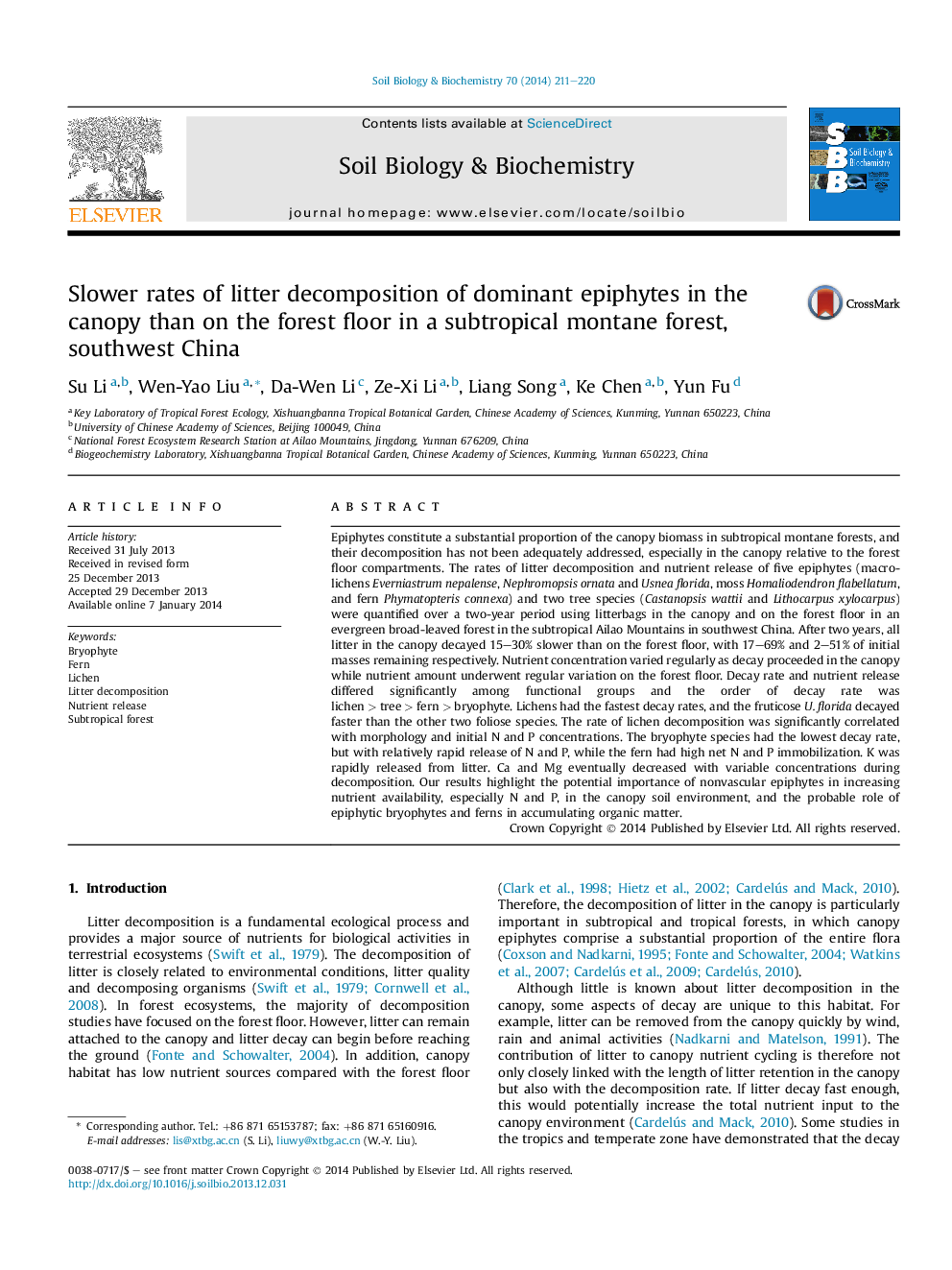| Article ID | Journal | Published Year | Pages | File Type |
|---|---|---|---|---|
| 8364950 | Soil Biology and Biochemistry | 2014 | 10 Pages |
Abstract
Epiphytes constitute a substantial proportion of the canopy biomass in subtropical montane forests, and their decomposition has not been adequately addressed, especially in the canopy relative to the forest floor compartments. The rates of litter decomposition and nutrient release of five epiphytes (macrolichens Everniastrum nepalense, Nephromopsis ornata and Usnea florida, moss Homaliodendron flabellatum, and fern Phymatopteris connexa) and two tree species (Castanopsis wattii and Lithocarpus xylocarpus) were quantified over a two-year period using litterbags in the canopy and on the forest floor in an evergreen broad-leaved forest in the subtropical Ailao Mountains in southwest China. After two years, all litter in the canopy decayed 15-30% slower than on the forest floor, with 17-69% and 2-51% of initial masses remaining respectively. Nutrient concentration varied regularly as decay proceeded in the canopy while nutrient amount underwent regular variation on the forest floor. Decay rate and nutrient release differed significantly among functional groups and the order of decay rate was lichen > tree > fern > bryophyte. Lichens had the fastest decay rates, and the fruticose U. florida decayed faster than the other two foliose species. The rate of lichen decomposition was significantly correlated with morphology and initial N and P concentrations. The bryophyte species had the lowest decay rate, but with relatively rapid release of N and P, while the fern had high net N and P immobilization. K was rapidly released from litter. Ca and Mg eventually decreased with variable concentrations during decomposition. Our results highlight the potential importance of nonvascular epiphytes in increasing nutrient availability, especially N and P, in the canopy soil environment, and the probable role of epiphytic bryophytes and ferns in accumulating organic matter.
Related Topics
Life Sciences
Agricultural and Biological Sciences
Soil Science
Authors
Su Li, Wen-Yao Liu, Da-Wen Li, Ze-Xi Li, Liang Song, Ke Chen, Yun Fu,
